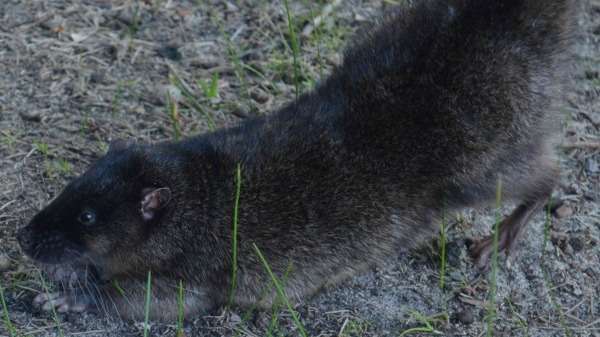Rakali study fills in knowledge gaps

Scientists are filling in the gaps about Western Australia's only freshwater aquatic mammal—the rakali, or native water rat, that colonised Australia over three million years.
The fact that little is known about rakali (Hydromys chrysogaster) led UWA's Dr Karen Bettink to examine both the genetic and physical variation across its range in order to fill in major gaps in understanding the species and to help guide future conservation efforts.
The rakali is one of only a small set of top order natural predators in freshwater ecosystems in Australia, according to Dr Bettink.
As she began her research, she realised how limited knowledge of the species was.
"Although its IUCN ranking is 'least concern', this is dependent on taxonomic clarification, so I investigated evolutionary lineages, gene flow and differences in external morphology, and the relationships between these," she says.
There were already obvious physical differences of pelt colouration and white tail tip length between southwest WA and Barrow Island populations and the remainder of the species' range.
Unlike in areas throughout the rest of Australia and New Guinea, southwest animals are darkly coloured on their backs, with a pale grey to cream underside while those from Barrow Island are a pale silver grey with silver underside, with occasional albino or pure white individuals.
Dr Bettink says these coats likely evolved to match the dominant background where they live—the pale colour for coastline environments and a dark colour for the tannin-stained southwest waterways.
Following genetic examination, Dr Bettink recorded numerous evolutionary lineages and high levels of genetic structure, which provides a viable case for one new species in New Guinea and at least subspecies delineation in Australia.
"At the moment all populations are only known by the one species, however, southwest WA, Barrow Island and Tasmanian populations appear to at least represent different subspecies," she says.
With a high dependence on wetlands and waterways, populations particularly in the north of the southwest WA's range (Perth to Moore River) are at risk from climate change due to declining rainfall and groundwater levels, losses in wetlands due to clearing and land use change and the significant increase in temperatures and drying predicted in the north of the region.
"This work can help in future conservation by understanding how and which populations naturally divided and evolved into what we see today, which ones may be at risk and which ones need extra protection or monitoring," Dr Bettink says.
Provided by Science Network WA
This article first appeared on ScienceNetwork Western Australia a science news website based at Scitech.



















